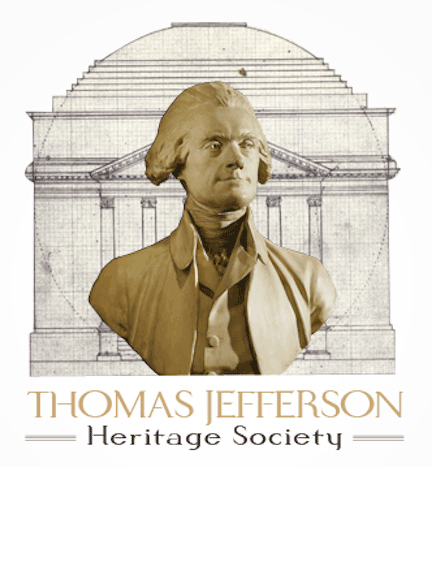Twilight at Monticello
Once James Madison was inaugurated as president, it was time for Thomas Jefferson to return to Monticello. In the 17 years of his remaining life, up until his death at age 83, he continued on the same innovative trajectory that started when he was selected to draft the Declaration of Independence, 35 years before. This is the period that Alan Pell Crawford calls Twilight at Monticello. Although oddly named, Crawford has the opportunity to build his book around the three great events of Jefferson’s last years.
As soon as he returned, Jefferson began the construction of his hideaway home at Poplar Forest. At the same time, he developed his concept of an “academical village,” which in 1817 would become the University of Virginia. Hovering over all this effort, as well as his agricultural pursuits at Monticello, was Jefferson’s debt, which collided with the collapse of land values in 1819, and brought him to ruin.
These are the seminal events of Jefferson’s last years. Unfortunately, Crawford avoids developing these themes and only touches on them in an anecdotal fashion. This is the model for the book which is a pleasant read for those who might be touching Jefferson’s life for the first time. But the first quarter of the book is used to sketch the details of Jefferson’s life up to his return to Monticello, and of course, there is the Hemings story, the details of which all predate these “twilight” years.
Crawford joins the effort to juggle the evidence to prove that Thomas Jefferson and Sally Hemings had a long time relationship that produced children. One of the real problems with the Thomas-Sally relationship is how it was conducted under everyone’s nose. This was an issue that was completely ignored in the 2000 Committee Report from Monticello and there has been a scramble since then to close that gap. John Kukla in Mr. Jefferson’s Women essentially gives up and says that everyone knew it.
That seems to be the new strategy. Crawford lends support by discovering a “secret passage way” through which Hemings could reach Jefferson’s bedroom. Jefferson Vindicated discusses at length that the stairways at Monticello were part of the design. It would seem common logic must take over at some point and compel one to recognize that Hemings does not sneak into Jefferson’s bedroom for twenty years without anyone in the house knowing it. In fact, there were grandchildren of Jefferson who claim no one could have gone to Jefferson’s room without them hearing it. Crawford ignores this although it is clear even today that voices in Jefferson’s room can be heard in the room above it.
Crawford may have been influenced by an article in the National Genealogical Society Quarterly by Helen F.M. Leary. She claimed a “secret” passageway was built in 1802-03. This was actually a planned stairway. Also, it would not have been available for the earlier assignations that supposedly preceded the birth of children to Hemings in 1795, 1798, 1799 and 1802.
Jefferson never returned to Washington after his presidency, and indeed, rarely left Monticello except to travel to Poplar Forest. Crawford’s interest in these years promised a new and interesting look into Jefferson’s boundless energy almost to death. It is a trip in which we see some interesting sights, but somehow the main character is never really in the driver's seat.
